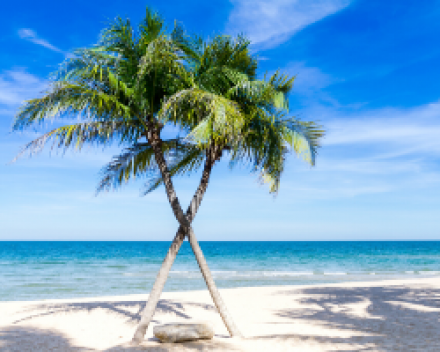The outstanding values of Halong Bay - Handspan Travel Indochina
2Halong Bay, one of the world heritages recognized by UNESCO, is always an attractive destination for domestic and international tourists. The bay is famous for its magnificent scenery, fanciful caves, beautiful beaches, and sandy banks. Let's see the outstanding values of Halong Bay with Handspan Travel Indochina!
Through this article, you will find out these pieces of information below.
Aesthetic value
Aesthetic value is one of the noticeable values of Halong Bay. The bay is charming all year round, from spring to winter. No matter which season you come here, you can still find impressive stone islands incredibly diverse in shapes, and patterns, such as Dinh Huong Islet, Fighting Cocks Islet (Trong Mai Islet), etc.
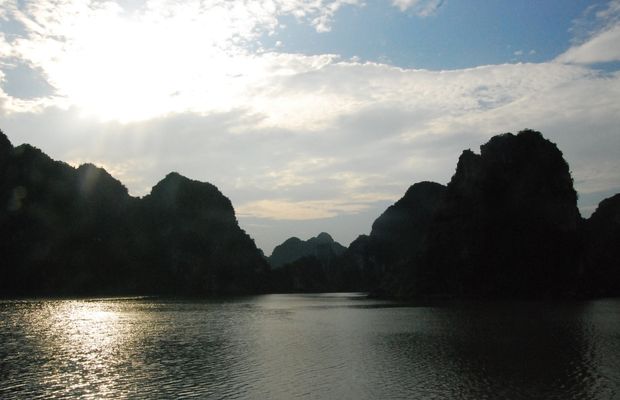
Dinh Huong Islet
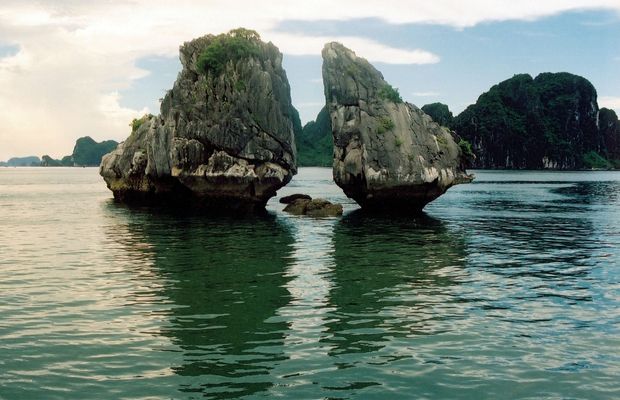
Fighting Cocks Islet
Halong Bay also has attractive caves hidden under the forest canopy. They are Thien Cung cave, Dau Go cave, Sung Sot cave, Trinh Nu cave, Tam Cung cave, etc. Although these caves have distinctive characteristics, they all possess mesmerizing charm. For more worth visiting caves in Halong Bay, please refer to our post: The top 05 amazing caves in Halong Bay you should not miss.
Besides karst limestone islands and stunning caves, the aesthetic value of Halong Bay is also in the charming beaches with stretching smooth sandy banks, lying under the islets. Here you can enjoy swimming and admiring the spectacular landscape.
Let's visit Halong Bay, stay on a boat, and feel yourself the aesthetic value of Halong Bay!
Geological value
Geological value is also among the values of Halong Bay contributing to affirming the bay's position as a world natural heritage. With the country's most significant number of islands, the geological history of Ha Long Bay has been studied for at least 500 million years with many sedimentary formations. The bay is home to almost all the basic forms of karst topography, such as karst plains, valleys, and karst and towers. Besides, the diverse system of caves on the bay belongs to the underground karst terrain, divided into three main groups below.
- Ancient underground cave (Sung Sot Cave, Thien Cung Cave, Dau Go Cave, etc.)
- Karst background cave (Tien Ong Cave, Trong Cave, Trinh Nu Cave, etc.),
- Karst cave through the sea (Ba Ham Cave, Luon Cave, Ba Hang Cave, etc.).
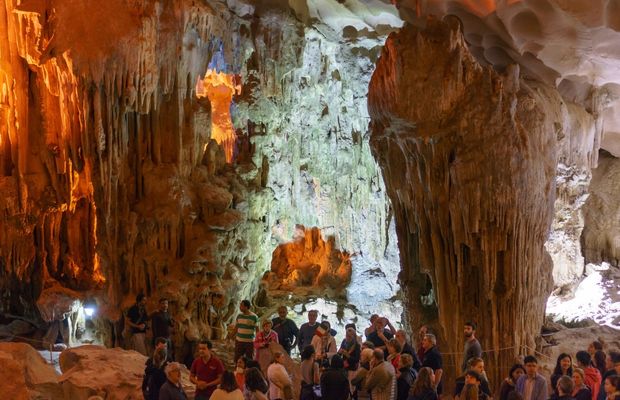
Sung Sot Cave
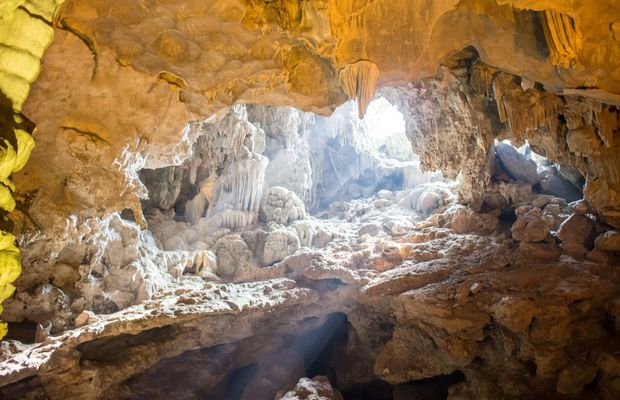
Thien Cung Cave
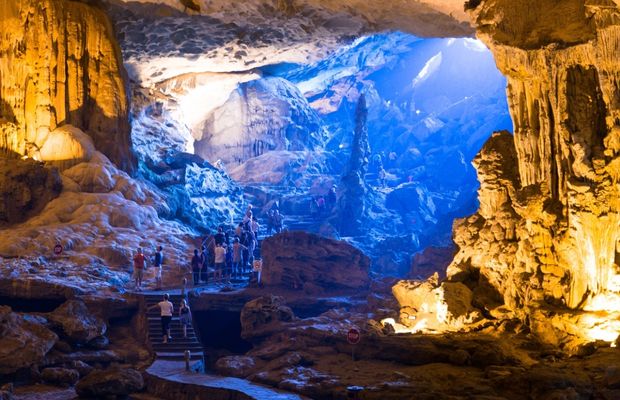
Dau Go Cave
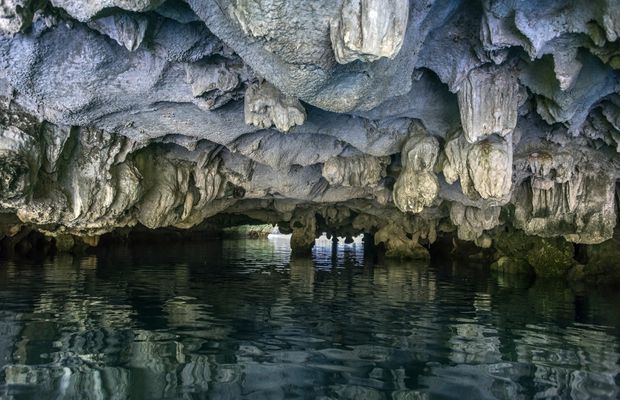
Luon Cave
Biodiversity value
Biodiversity value is also among the values of Halong Bay appealing to tourists. Let's see in detail below.
- Diversity of Ecosystems
In the Halong Bay area, there are ten specific types of ecosystems of the tropical limestone archipelago. They are the vegetation ecosystem on the island, the pine ecosystem, the cave ecosystem, the hard bottom tidal zone, an ecosystem of the soft bottom tidal zone, the sand intertidal ecosystem, the mangrove forest ecosystem, the seagrass bed ecosystem, the coastal permanent wetland ecosystem, and coral reef ecosystem.
- Diversity in species composition
Ha Long Bay's biological world is diverse and rich, concentrating terrestrial, aquatic, lower, and higher species living in 10 marine and forest ecosystems. Currently, there are nearly 3000 species in the area.
- Diversity of genetic resources
The diversity of genetic resources has made Halong Bay different from other regions in the area. Many organisms living in Ha Long Bay have endemic and rare genetic resources and medicinal genes.
Historical and cultural values
Halong Bay, one of the residences of living of the ancient Vietnamese people, has high historical and cultural values. Three successive cultures are detected in the bay, including Soi Nhu, Cai Beo, and Halong. Below is general information about each culture.
- Soi Nhu Culture
Soi Nhu Culture is the oldest culture in Halong Bay, dating back from 18,000 to 7,000 years ago. The inhabitants of this period lived mainly on the limestone islands of Ha Long Bay, Bai Tu Long Bay, and coastal caves.
- Cai Beo Culture
Cai Beo Culture dates back from 7000 to 5000 years ago. The inhabitants of this period lived mainly on the bay's shores leaning against the mountains, primarily limestone mountains.
- Halong Culture
Halong Culture is from 4500 years to 3000 years ago. During this time, people's lives are associated with the sea. They combined fishing with hunting, gathering, and farming.
Currently, there are many caves preserving cultural vestiges of prehistoric people. You can find them in Tien Ong Cave, Trong Cave, Trinh Nu Cave, Thien Cung Cave, Me Cung Cave, etc.
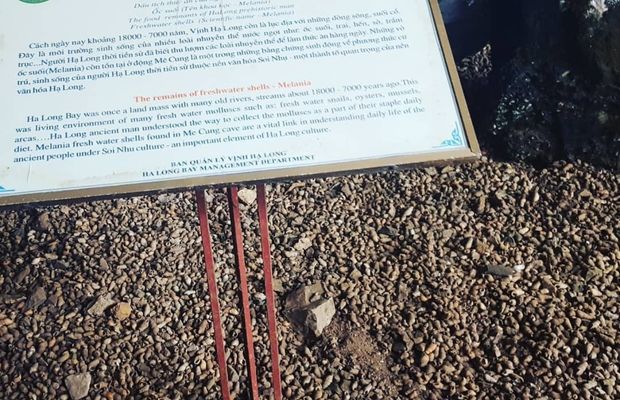
Melania's shell remains in Me Cung Cave
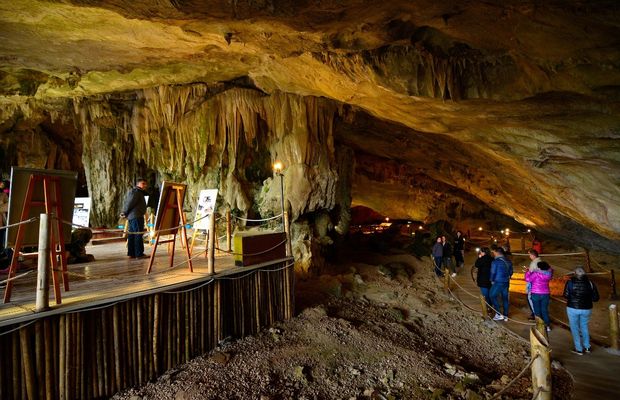
Tien Ong Cave
In conclusion, you have just had an overview of the values of Halong Bay. If you would like to know more about it, let's travel to Halong Bay and learn yourself about the bay!
__logo.png)
__hanoi-water-puppets.jpg)
__angkor-wat-blue-reflections.jpg)
__vientiane-buddha-park-monks.jpg)
__bagan-dhammayazika-dusk.jpg)
